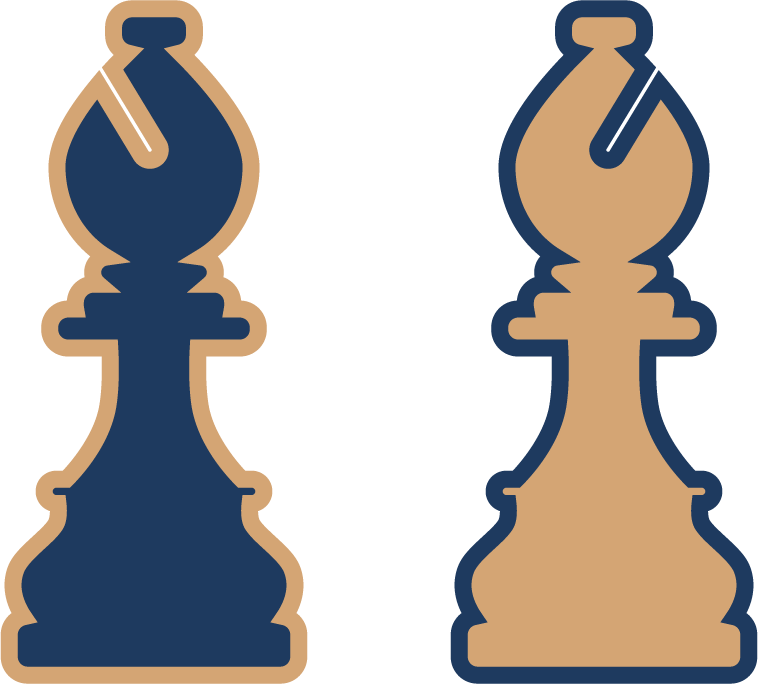Have you ever wondered why some people achieve remarkable success while others struggle to make progress? The answer lies in their approach to personal development. Over the years, intentional growth has proven to be a game-changer for countless individuals.
Take Drew’s health journey, for example. By focusing on building habits and mental resilience, he transformed his life. Similarly, Tiago Forte’s multi-year evolution highlights the power of internal identity over external goals.
This article explores 10 core principles tested through real-life challenges. These insights are inspired by resources like Atomic Habits and Discipline Equals Freedom. Remember, growth is not a destination but a continuous journey.
Key Takeaways
- Intentional development leads to long-term success.
- Focus on internal identity, not just external goals.
- Physical discipline strengthens mental resilience.
- Personalized paths are more effective than generic advice.
- Growth is a continuous process, not a one-time achievement.
Introduction to Self-Growth and Success
True transformation requires more than just quick fixes and hacks. Many people dive into personal development but only scratch the surface. Studies show that 70% of seekers engage at a superficial level, while the average person tries three or more methods annually without depth.
This approach often leads to chasing dopamine hits, falling into comparison traps, and relying on fleeting motivation. To achieve lasting change, you need a deeper understanding of what drives growth. It’s not about shortcuts but aligning your mind, heart, and body.
Take Drew’s story, for example. After losing his house and career, he hit rock bottom. But through deep transformational work, he rebuilt his life. Similarly, Tiago Forte spent seven years refining his writing journey to crystallize key principles.
Neuroscience supports this approach, showing that forming new habits takes an average of 66 days. Annual “spiritual tune-ups” can also help you stay on track. Social media, while often a distraction, can be a powerful tool when used intentionally.
This article combines lived experiences and research to guide you on your way to meaningful change. Growth isn’t about perfection but progress.
1. Choose Your Own Path
Success looks different for everyone, and that’s the beauty of it. While society often defines achievement through promotions, salaries, or titles, true fulfillment comes from aligning your journey with your authentic desires. Many people spend years chasing external validation, only to feel empty inside.
Take Drew’s story, for example. After climbing the corporate ladder, he realized his work lacked purpose. He pivoted to health coaching, finding deeper meaning in helping others. This shift highlights the importance of defining your own success rather than following societal expectations.
Why Defining Your Own Success Matters
Societal and family pressures can cloud your vision. Tools like the Ikigai framework and StrengthsFinder assessment can help you uncover your true passions and strengths. These resources guide you toward a path that feels authentic and fulfilling.
Financial fears often hold people back. Planning a safety net can ease these concerns, allowing you to take calculated risks. Additionally, a 30-Day Digital Detox can reduce comparison temptation, helping you focus on your unique journey.
Tiago Forte’s “Frontier Sharing” concept encourages documenting your progress in real-time. This approach fosters vulnerability and accountability, key elements in creating a meaningful work life. Remember, your journey is yours alone—embrace it fully.
2. Growth and Comfort Do Not Coexist
Stepping out of your comfort zone is the first step toward unlocking your true potential. Just like infants learn to walk by falling repeatedly, progress often requires facing discomfort. Drew’s journey with back squats is a perfect example. After multiple failures, he discovered a breakthrough in physiotherapy that transformed his approach to training.
Embracing Discomfort for Growth
Neuroplasticity shows that discomfort is essential for learning. When you challenge yourself, your brain forms new connections, enabling growth. The 5 Zones of Growth model—Comfort, Stretch, and Panic—illustrates how pushing boundaries leads to development.
Physical training parallels this concept. Progressive overload, a key principle in fitness, involves gradually increasing resistance to build strength. Similarly, unstructured environments like Burning Man push participants to adapt and grow.
Practical tools like Discomfort Journaling can help you recognize patterns and take actionable steps. Address failure myths head-on—98% of startups fail, but each setback is a learning opportunity. Implement the 5-Second Rule to initiate action and build momentum.
Navy SEAL Hell Week teaches resilience through extreme challenges. Differentiate between Productive Discomfort and Toxic Stress to ensure healthy growth. Start with a weekly “Comfort Zone Exit” challenge to make discomfort a regular part of your process.
3. Take Ownership of Your Life
Taking control of your life starts with a simple yet powerful shift in mindset. It’s about recognizing that every decision you make shapes your reality. Drew’s story is a testament to this. After losing his house, he realized that blaming external factors only kept him stuck. His accountability awakening was the turning point that led to rebuilding his life.

Jocko Willink’s Extreme Ownership philosophy emphasizes that true leadership begins with taking full responsibility for your actions. This mindset isn’t just for leaders—it’s for anyone who wants to create meaningful change. The Landmark Forum, a leadership program, reveals how self-awareness can dismantle limiting beliefs and open doors to new possibilities.
The Power of Self-Awareness
Self-awareness is the foundation of ownership. It allows you to identify patterns in your behavior and take proactive steps to change them. The Radical Responsibility Framework is a tool that helps you deconstruct victim mentality and reclaim your power. By focusing on what you can control, you shift from reacting to creating.
One practical exercise is the Energy Audit. Track where your time and energy go for a week. This helps you spot ownership gaps and make intentional adjustments. Drew used this method to transform his coping mechanisms, replacing alcohol with healthier habits.
Another effective strategy is the No-Blame Week challenge. For seven days, commit to not blaming anyone or anything for your circumstances. This exercise builds emotional resilience and reinforces accountability. Jungian shadow work and Vipassana meditation can also deepen your understanding of emotional ownership.
Financial ownership is equally important. Calculate your personal ROI on investments, whether it’s education, health, or career. The Choice Cascade decision-making model helps you evaluate options systematically, ensuring your choices align with your goals.
Finally, implement a 360-Degree Feedback plan. Gather insights from peers, mentors, and family to gain a holistic view of your strengths and areas for improvement. This feedback loop fosters continuous growth and reinforces your commitment to ownership.
4. Be Okay With Failing
Failure is often seen as a setback, but it’s actually a stepping stone to success. Many people fear making mistakes, yet they are essential for growth. Drew’s back squat failure, for instance, led to a physio diagnosis that transformed his training approach. This is just one example of how setbacks can pave the way for breakthroughs.
Learning from Failure
Not all failures are created equal. Productive failure teaches valuable lessons, while destructive failure can hinder progress. The F.A.I.L. Framework (First Attempt In Learning) is a powerful tool to reframe setbacks as opportunities. James Dyson’s 5,126 prototypes before success highlight the importance of persistence.
One practical exercise is creating a “Failure Resume.” Documenting your mistakes helps you identify patterns and learn from them. SpaceX’s explosive prototyping philosophy is another great case study. They view each failure as a step closer to innovation.
To address perfectionism, adopt the “Minimum Viable Progress” mindset. Small, consistent steps are more effective than waiting for perfection. Nassim Taleb’s antifragility concepts also emphasize how challenges can make you stronger.
Finally, implement the “Post-Mortem Analysis” protocol. After a setback, analyze what went wrong and how to improve. The global “F*ckup Nights” movement encourages sharing failure stories to foster growth and resilience.
Take action with the 30-Day Experimental Mindset Challenge. Embrace failure as a natural part of the process and use it to fuel your journey forward.
5. Build Discipline for Long-Term Success
Discipline is the bridge between goals and accomplishment. While motivation can spark action, it’s discipline that keeps you moving forward. Drew’s training-anchored daily routine is a perfect example. By focusing on consistent habits, he transformed his physical and mental resilience.

Research from Duke University shows that 40% of our actions are habitual. This means building strong habits is essential for long-term success. James Clear’s Atomic Habits emphasizes that small, consistent changes lead to significant results over time.
Developing a Routine
Motivation is fleeting, but discipline is reliable. Neuroscience reveals that relying on willpower alone can lead to burnout. Instead, techniques like Discipline Stacking help you build momentum by linking new habits to existing ones.
One effective tool is the “Habit Chain” visual tracking system. Marking your progress daily creates a sense of accomplishment and reinforces consistency. Olympic athletes use periodization models to structure their training, ensuring steady progress without overexertion.
Start small with the 2-Minute Rule. Commit to a new habit for just two minutes daily. This reduces resistance and makes it easier to build momentum. Contrary to popular belief, willpower isn’t finite—it’s a skill that improves with practice.
Another strategy is Temptation Bundling. Pair a task you enjoy with one you’ve been avoiding. For example, listen to your favorite podcast while exercising. This makes the process more enjoyable and sustainable.
For cognitive discipline, adopt Deep Work scheduling. Block out uninterrupted time for focused tasks, minimizing distractions. The Non-Negotiable Trinity framework ensures you prioritize three key activities daily, aligning your actions with your goals.
Take action with the 66-Day Habit Formation Blueprint. Research shows it takes an average of 66 days to form a new habit. Track your progress, celebrate small wins, and stay committed to your journey.
Conclusion: Start Your Journey to Self-Growth Today
Your path to meaningful change begins with a single step. Research shows that 68% of personal transformations start during a crisis, proving that even the toughest moments can lead to breakthroughs. Drew’s 5-year timeline and Tiago Forte’s “Annual Growth Audit” practice highlight the power of consistent effort.
To get started, recap the 5 Core Principles Matrix and use the “Growth GPS” roadmap. This tool helps you navigate challenges and stay on track. For setbacks, implement emergency reset protocols to keep moving forward.
Take inspiration from a client’s transformation timeline. Their story shows how small, intentional steps lead to lasting results. Use the “Principle Stacking” approach to combine habits for maximum impact.
Ready to commit? Download the Commitment Contract template and join the “100-Day Growth Sprint” challenge. Your journey to success starts today.
FAQ
Why is defining my own success important?
Defining your own success ensures you align your goals with your values, leading to a more fulfilling and authentic life. It helps you stay motivated and focused on what truly matters to you.
How does discomfort contribute to personal development?
Discomfort pushes you out of your comfort zone, allowing you to learn new skills, adapt to challenges, and grow. It’s a key part of achieving meaningful progress.
What role does self-awareness play in taking ownership of life?
Self-awareness helps you understand your strengths, weaknesses, and motivations. This understanding empowers you to make intentional decisions and take responsibility for your actions.
Why is it important to be okay with failing?
Failure is a natural part of the learning process. It provides valuable lessons, builds resilience, and helps you refine your approach to achieve better results in the future.
How can I build discipline for long-term success?
Start by creating a consistent routine, setting clear goals, and focusing on small, manageable steps. Over time, these habits will strengthen your discipline and lead to lasting success.
